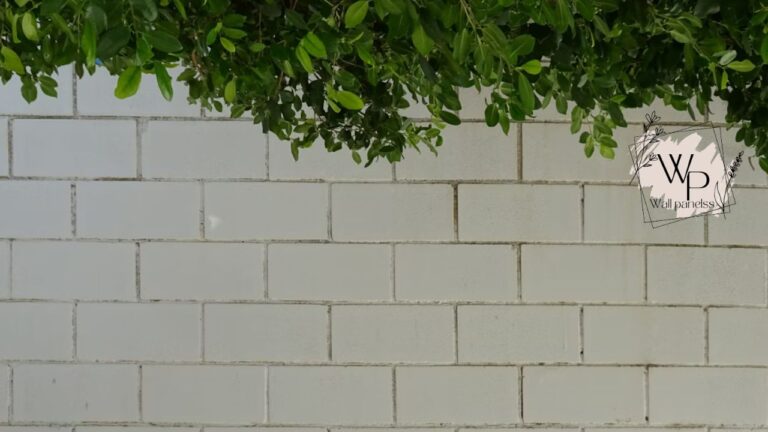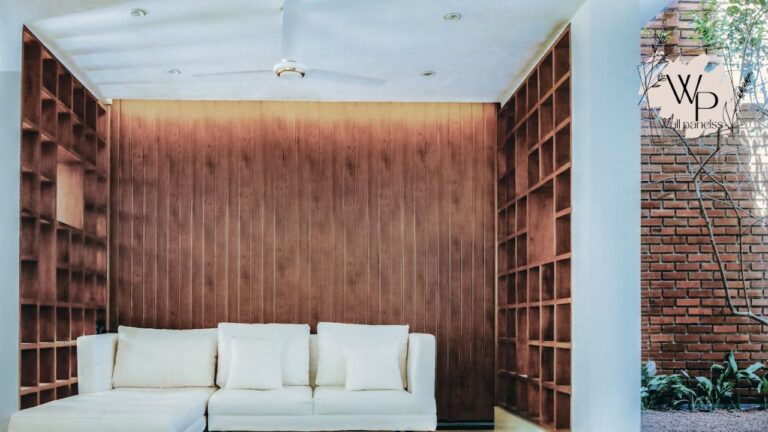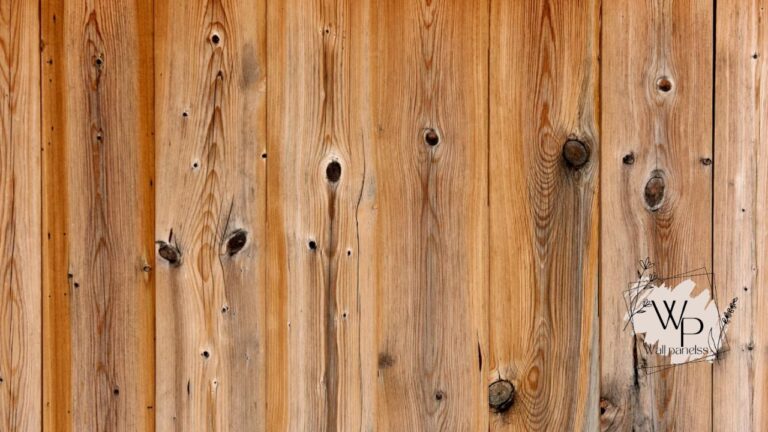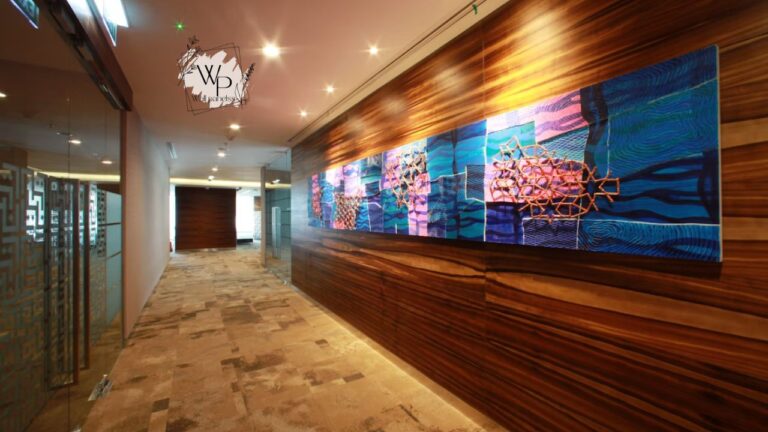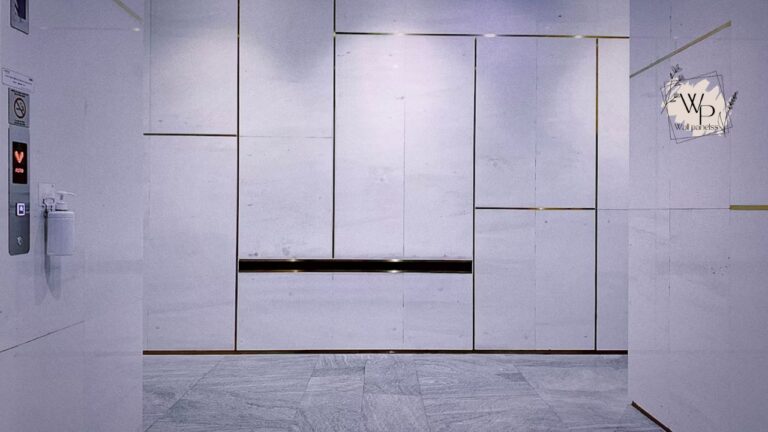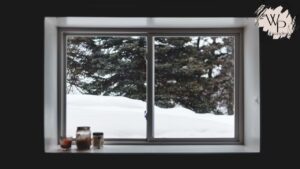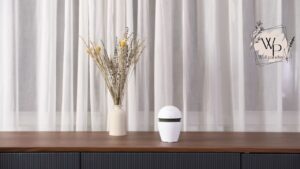Tired of staring at flat, boring walls? You’re not alone. Many homeowners and designers are now turning to wall panels to add incredible texture, depth, and personality to their interiors. These versatile design elements can completely transform a room, turning a bland space into a stunning feature that reflects your unique style.
Whether you’re aiming for a rustic, modern, or classic look, there’s a world of wall panels waiting to be discovered. From rich, warm wood to sleek, contemporary acrylics, the options are nearly endless. This guide will walk you through everything you need to know to make a confident and inspiring choice for your next project.
Wall Panels at a Glance
To help you get started, here’s a quick overview of the most popular types of wall panels available today.
| Panel Type | Common Materials | Key Benefits | Best For |
|---|---|---|---|
| 3D Wall Panels | PVC, MDF, Gypsum, Bamboo Fiber | Adds depth, texture, and visual interest. | Accent walls, living rooms, bedrooms, commercial spaces. |
| Wood Wall Panels | Reclaimed Wood, MDF, Plywood | Creates warmth, natural beauty, and a rustic feel. | Feature walls, offices, dining rooms, cozy spaces. |
| Upholstered Panels | Fabric, Leather, Foam | Provides sound absorption, softness, and luxury. | Headboards, home theaters, quiet reading nooks. |
| Slat Wall Panels | Wood, MDF, Composite | Offers a clean, linear, and modern aesthetic. | Media walls, entryways, minimalist designs. |
| Acrylic Panels | High-Gloss Acrylic, PVC | Delivers a sleek, reflective, and contemporary finish. | Kitchen backsplashes, bathrooms, modern offices. |
| Stone Veneer Panels | Natural Stone, Faux Stone | Mimics the look of real stone for a rugged, upscale feel. | Fireplace surrounds, exterior accents, feature walls. |
The Transformative Power of Wall Panels
So, what’s all the fuss about? Why are so many people choosing wall panels over traditional paint or wallpaper? The answer lies in their remarkable ability to instantly elevate a space. Unlike a simple coat of paint, these panels introduce a tactile dimension that paint can never replicate.
Imagine a living room where one wall is covered in intricate, geometric 3D panels that play with light and shadow throughout the day. Or picture a cozy bedroom with a plush, upholstered headboard wall that invites you to relax and unwind. This is the kind of dramatic impact that wall panels can deliver, turning an ordinary room into an extraordinary experience. They are not just a background element; they become a central piece of your home’s art and architecture.
User Voices: What Homeowners Are Saying
Don’t just take our word for it. The excitement around decorative wall panels is backed by countless positive experiences from homeowners who have made the switch.
One reviewer, Sarah from Austin, shared her experience with reclaimed wood panels: “I was hesitant at first, thinking it might be too much for my small living room. But the result is breathtaking! The wood adds so much warmth and character. Everyone who visits comments on it. It completely changed the vibe of the room for the better. 10/10 would recommend!”
Another user, Mark from Chicago, opted for modern 3D PVC panels for his home office. “My workspace felt so sterile and uninspiring. Installing the 3D panels was a game-changer. It feels dynamic and professional now. The installation was surprisingly easy, and the effect is high-end. It feels like a custom-designed office.” His rating? A solid five stars.
These stories highlight a common theme: wall panels offer a high-impact design solution that is both accessible and deeply satisfying.
A Deep Dive into Different Types of Wall Panels
With so many options on the market, choosing the right material can feel overwhelming. Let’s break down the most popular types to help you find the perfect match for your vision, budget, and lifestyle.
3D Wall Panels: Art You Can Touch
3D wall panels are perhaps the most visually striking option available. They feature raised patterns and textures that pop out from the wall, creating a dynamic and engaging surface.
Materials and Styles
These panels come in a variety of materials, each with its own set of characteristics:
- Plant Fiber (Bamboo/Sugarcane): Eco-friendly, lightweight, and paintable. They are a fantastic sustainable choice for those looking to create a custom look.
- PVC (Polyvinyl Chloride): Extremely durable, waterproof, and easy to clean. This makes them ideal for high-moisture areas like bathrooms, kitchens, and even commercial spaces.
- MDF (Medium-Density Fiberboard): A cost-effective and versatile option. MDF panels are smooth, stable, and can be painted or finished in numerous ways to match your decor.
- Gypsum/Plaster: For those seeking a seamless, high-end finish. Gypsum panels can be integrated directly into drywall, plastered, and painted for a look that appears built-in.
The design possibilities are endless, ranging from subtle waves and ripples to bold geometric shapes and intricate floral patterns.
Installation and Cost
Most 3D wall panels are designed for DIY installation. They are typically lightweight and can be glued directly to the wall. For materials like gypsum, professional installation is recommended to achieve a flawless, seamless finish.
Cost varies widely based on material. Plant fiber panels are generally the most affordable, while custom gypsum or premium PVC panels will be at the higher end of the price spectrum.
Wood Wall Panels: Timeless Warmth and Character
There’s something undeniably comforting and classic about wood. Wood wall panels bring natural beauty and texture into your home, creating an atmosphere that is both rustic and refined.
Reclaimed vs. Engineered Wood
You’ll generally find two main categories of wood panels:
- Reclaimed Wood: This is genuine timber salvaged from old barns, factories, and other structures. Each plank tells a story, featuring unique weathering, nail holes, and color variations. It’s an eco-friendly choice that adds authentic history and charm to your space.
- Engineered Wood (MDF/Plywood): These panels use a wood veneer or a wood-like finish over a fiberboard or plywood core. They offer a more consistent and uniform look than reclaimed wood and are often more affordable and easier to install.
Popular Styles
- Shiplap: Horizontal or vertical planks that overlap, creating clean lines and a modern farmhouse feel.
- Board and Batten: A classic style featuring wide boards joined by thin vertical strips (battens). It adds a sense of tradition and architectural detail.
- Slat Wood Panels: A very popular contemporary option. These panels consist of narrow vertical wood slats, often mounted on a felt backing for added acoustic benefits. They are perfect for media walls and modern living spaces.
Installing wood wall panels can be a straightforward DIY project, especially with modern peel-and-stick or interlocking plank systems.
Upholstered Wall Panels: Softness and Sophistication
For a touch of luxury and comfort, nothing beats upholstered wall panels. Covered in fabric or leather, these soft panels add a plush, high-end feel to any room while also offering practical acoustic benefits.
Where to Use Them
Upholstered panels are incredibly versatile. They are a popular choice for:
- Bedroom Headboards: Create a stunning, full-wall headboard that feels like a boutique hotel.
- Home Theaters: The fabric and foam construction helps absorb sound, improving the acoustics of the room for a better movie-watching experience.
- Reading Nooks & Benches: Add a layer of comfort and style to built-in seating areas.
- Entryways: Make a bold and welcoming statement right at your front door.
Material Choices
The fabric you choose will define the final look. Velvet brings a sense of opulence and drama, linen offers a more relaxed and natural vibe, while leather (or faux leather) provides a sleek, modern edge. The color and texture possibilities are virtually limitless, allowing you to perfectly coordinate with your existing furniture and decor.
Installation is often simple, with many panels coming with peel-and-stick backing or easy-to-use mounting hardware.
Slat Wall Panels: The Modern Minimalist’s Dream
If your style leans toward clean lines and contemporary design, slat wood panels are an exceptional choice. These acoustic wall panels have surged in popularity for their ability to create a sophisticated, textured look without overwhelming a space.
Design and Functionality
Slat wall panels typically consist of thin, vertical strips of wood (or wood-look material) mounted on a dark, sound-absorbing felt backing. This design is brilliant for a few reasons:
- Visual Interest: The repeating linear pattern creates a sense of height and order, drawing the eye upward and making a room feel more spacious.
- Acoustic Properties: The felt backing is designed to dampen sound, reducing echo and reverberation. This makes them perfect for media walls where you watch TV, home offices where you take calls, or any open-plan living area.
- Versatility: They work beautifully as a full accent wall, behind a television, or even as a feature in an entryway or hallway. The natural wood tones bring warmth, while the clean lines keep the look modern.
These panels are one of the most sought-after types of wall panels today because they perfectly blend form and function.
Acrylic and Metal Panels: Sleek and Contemporary
For an ultra-modern, high-gloss finish, acrylic or metal panels are the way to go. These materials offer a slick, reflective surface that is perfect for contemporary, minimalist, and industrial interiors.
High-Gloss Acrylic
Acrylic panels, often sold under brand names like Lucite or Plexiglas, are a fantastic alternative to back-painted glass. They are:
- Lightweight and Shatter-Resistant: Safer and easier to install than glass.
- Vibrant: Available in a huge range of solid colors, from bold brights to subtle neutrals.
- Easy to Clean: Their non-porous surface makes them ideal for kitchen backsplashes and bathroom walls.
The reflective quality of high-gloss acrylic can also help make a small space feel larger and brighter by bouncing light around the room.
Metal Panels
Metal panels, made from materials like stainless steel, copper, or aluminum, bring an industrial or futuristic edge. They can be found in various finishes:
- Brushed: Offers a sophisticated, textured look that hides fingerprints.
- Polished: Highly reflective and glamorous.
- Corrugated: Adds a distinct industrial, wavy texture.
- Pressed Tin: Features embossed, vintage patterns perfect for ceilings or backsplashes.
These panels are incredibly durable and can be used to create a powerful design statement in both residential and commercial settings.
Stone and Faux Stone Veneer Panels: Rugged Elegance
Love the look of a stone wall but not the cost and complexity? Stone veneer wall panels are the perfect solution. They provide the same rugged, earthy aesthetic as natural stone at a fraction of the weight and price.
Natural vs. Faux Stone
- Natural Stone Veneer: These panels are made from thin slices of real stone (like slate, quartzite, or travertine) attached to a backing. They offer the authentic color variation and texture of natural stone.
- Faux Stone Veneer: Typically made from a lightweight concrete composite or a high-density polymer, faux stone is molded and colored to look just like the real thing. It’s often more affordable and even easier for a DIYer to install.
Both options come in interlocking panels that fit together seamlessly, making installation much faster and less labor-intensive than traditional masonry. They are a popular choice for fireplace surrounds, exterior accent walls, and creating a rustic feature in a living room or wine cellar.
Planning Your Wall Panel Project
Feeling inspired? Before you jump in, a little planning will ensure your project is a stunning success.
Step 1: Define Your Goal and Style
Start by asking yourself what you want to achieve. Are you trying to create a cozy and inviting bedroom? A dramatic and modern living room? Or a professional and inspiring home office? Your goal will help narrow down your style.
Consider your existing decor. The wall panels you choose should complement your furniture, flooring, and overall color scheme. A rustic reclaimed wood wall might clash with ultra-modern minimalist furniture, while a sleek acrylic panel might feel out of place in a traditional farmhouse setting.
Step 2: Choose Your Wall
Not every wall is a good candidate for a feature wall. The best choice is typically the wall your eyes are naturally drawn to when you enter the room. This is often the wall behind the sofa in the living room, the bed in the bedroom, or the main wall in an entryway.
Think about focal points. A panelled wall behind a TV or fireplace can help frame the area and make it feel more integrated and intentional. Avoid walls that are broken up by too many doors or windows, as this can disrupt the flow and impact of the panels.
Step 3: Measure and Budget
Carefully measure the height and width of the wall you plan to cover. This will allow you to calculate the square footage needed and estimate your total cost.
When budgeting, remember to account for more than just the panels themselves. You may also need:
- Adhesive or mounting hardware
- Tools (saw, level, measuring tape)
- Trim or edge pieces for a finished look
- Paint or sealant (for certain types of panels)
- The cost of professional installation, if you choose not to DIY
Having a clear budget from the start will help you choose materials that fit within your financial comfort zone.
Step 4: Installation – DIY or Pro?
One of the biggest advantages of modern wall panels is that many are designed with the DIYer in mind. Peel-and-stick backings, interlocking systems, and lightweight materials make installation accessible to anyone with basic tools and a bit of patience.
However, for some types of panels or for a truly perfect finish, hiring a professional is the way to go. Consider a pro if:
- You are using heavy materials like natural stone veneer.
- You want a seamless finish with gypsum panels.
- The wall is uneven or requires significant prep work.
- You simply don’t have the time or confidence to tackle the project yourself.
A Final Word on Wall Panels
Wall panels are more than just a wall covering; they are a powerful tool for expressing your personal style and completely reshaping the feel of your home. They offer a unique combination of color, texture, and dimension that can bring any room to life.
From the natural warmth of wood to the modern allure of 3D patterns, there is a perfect panel solution for every taste and budget. By adding this single element, you can create a focal point that feels custom, luxurious, and deeply personal. It’s an investment in your home’s beauty and your own daily enjoyment of your space.
Frequently Asked Questions (FAQs)
1. Are wall panels a temporary or permanent solution?
It depends on the type and installation method. Many modern panels, especially peel-and-stick varieties, can be removed with minimal damage to the wall, making them a great option for renters. Heavier panels like stone veneer or those installed with strong adhesives are considered a more permanent feature.
2. Can I install wall panels in a bathroom or kitchen?
Absolutely! You just need to choose the right material. PVC, acrylic, and certain specially treated composite wall panels are waterproof and ideal for high-moisture areas. Avoid using untreated MDF or natural plant fiber panels in places where they might get wet.
3. Are wall panels difficult to clean?
Cleaning depends on the material. Smooth surfaces like acrylic or PVC can be wiped down easily with a damp cloth. For textured 3D or wood panels, a vacuum with a soft brush attachment is perfect for removing dust. Always check the manufacturer’s cleaning recommendations.
4. Can you hang pictures or shelves on a panelled wall?
Yes, but you need to do it correctly. You should not anchor heavy items to the panels themselves. Instead, use longer screws or anchors that go through the panel and securely into the studs or drywall behind it. This ensures your items are safely supported by the wall structure.
5. Do wall panels offer any insulation or soundproofing benefits?
They certainly can! Upholstered panels and acoustic slat wood panels are specifically designed to absorb sound and reduce echo. Most panels will also add a minor thermal insulation layer, though this effect is generally modest unless you are using specialized insulated panels.
Admin Recommendation
WallPanel Home Assistant Idle: The Ultimate Guide to Smart Home Displays


